John Fleming (1792-1845)
John Fleming was born in Glasgow around 1792. At the age of fourteen he was apprenticed to a house painter and his first encounter with art came when he was sent to work at Hamilton Palace and saw the collection of paintings there. He is believed to have made contact with James Saxon, a Glasgow portrait painter, before moving to London for a time, working as a housepainter and studying the national painting collections and contemporary works.
At that time Greenock had gone through a period of expansion and prosperity. This was in part due to the Napoleonic Wars but was also due to the beginnings of many of the industrial and maritime enterprises which were to bring the area much wealth during the nineteenth century. These changes provided the economic background which encouraged artists to settle in the town.
An indication of these changes can be seen in the formation of a society for 'the promotion of the Arts and Sciences in Greenock, Port Glasgow and vicinity' with the object of 'encouraging the exhibition of paintings and drawings by native artists and amateurs'.
By the early nineteenth century the demand for views of Scottish scenes was increasing. This was partly fuelled by the publication of Sir Walter Scott's novels and partly by the increasing ease with which the more romantic locations could be reached as a result of the invention of the steamboat and improved stagecoach services.
It was to serve this type of market that Fleming produced his small paintings of the Highlands. These were then engraved by the Glasgow engraver Joseph Swan (1796-1872). Swan's main business seems to have been a hybrid of engraver of book illustrations and portraits with being the publisher and promoter of his works. Fleming's first contact with Swan seems to have come about in 1828 when he collaborated with the Glasgow artist John Knox (1778-1845) and Swan on publishing a set of views of Glasgow entitled 'Select Views of Glasgow and its environs'. This led to a similar project 'Select Views on the Clyde' in 1830 and their best known collaboration 'Select Views of the Lakes of Scotland' in 1834.
One of Fleming's most popular works was the series of views of entitled 'Greenock from the East'. He painted various versions of this view, ranging in size from near miniature to the very large. An engraved version of one of the versions of this subject was used as a frontispiece illustration to Daniel Weir’s ‘History of Greenock’ published in 1829.
Unlike many later landscape painters he is happy to include steamships, industrial activity and commercial development in his view of the town. He still includes, somewhat uneasily, rustic figures in the foregrounds of these works. This realistic rendition of an urban landscape was an approach that later romantic painters often found difficulty in adopting. After the development of photography in 1839, few Scottish painters tackled urban or industrial subjects.
The three main types of work available to artists in Greenock in the nineteenth century were marine, topographical and portrait painting. Fleming does not seem to have been much drawn to marine painting. This is possibly because there were well established local marine painters in Robert Salmon, resident from 1811 until 1825, and from 1830 William Clark.
Portraiture was always an important part of Fleming's work. His first appearance in a local Greenock directory comes in 1831/32 when he is listed as a portrait painter. From 1834 he is listed as both a portrait and landscape painter. His portrait work seems to have been almost entirely commissioned from within the town. Outside of Greenock his reputation was as a painter of landscapes, often of the Highlands and of views of his native town. Although the tradition of local portraiture established by Fleming was weakened in the later nineteenth century by photography, the area continued to produce fine portrait painters such as Norman Macbeth.
Fleming regularly contributed works to the Glasgow Exhibition of the Fine Arts series on the works of living British Artists. The first of these exhibitions was held in the recently completed Argyll Arcade under the patronage of the Glasgow Dilettanti Society in September 1828 and the last in 1838. He also became an extraordinary member of the Glasgow Dilettanti Society. On exhibiting at the West of Scotland Academy of Fine Arts in their inaugural exhibition of 1841, he was elected a West of Scotland Academician. He exhibited 2 landscapes at each of three R.S.A. exhibitions, in 1828, 1830 and 1837.
He died on the 16th February 1845, his obituary clearly conveying the esteem in which his work was held and the high regard which native Greenockians had for Fleming as a man.
To get a print or license the use of any of these images please contact the Art UK shop. If you have any other questions concerning this collection please contact us at wattinstitution@inverclyde.gov.uk
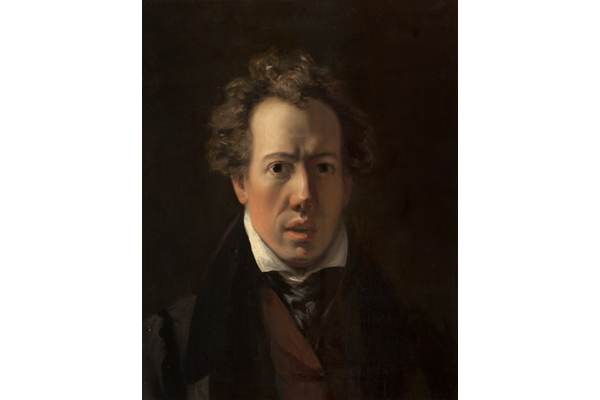
John Fleming (1792-1845) - Self Portrait
Self Portrait by John Fleming of Greenock (1792-1845)- Oil on canvas - 50 x 43 cm - 1830-1835 - 1977.826 - © McLean Museum and Art Gallery, Greenock.
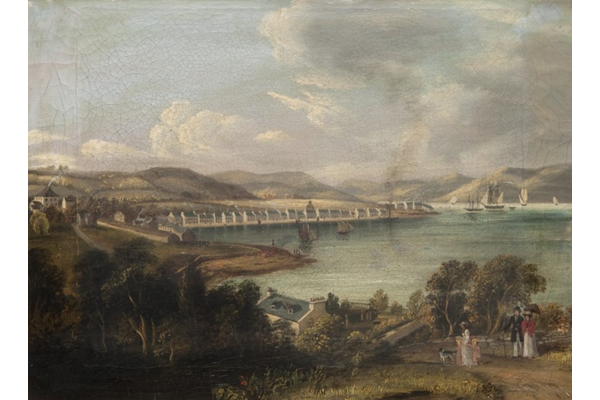
Gourock from the East
Gourock from the East by John Fleming (1792-1845) - Oil on canvas - 50 x 60 cm - circa 1828 - 1992.11 © McLean Museum and Art Gallery, Greenock.
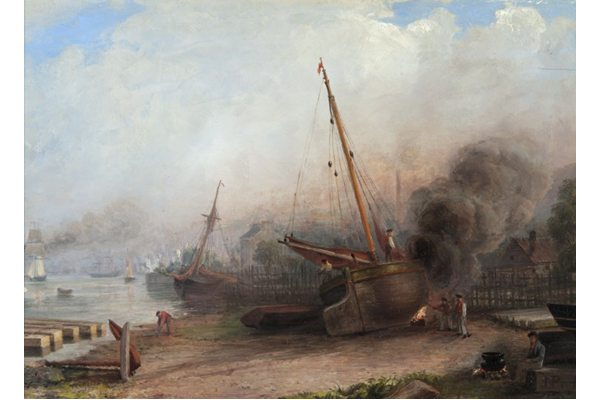
Burning the Bottom, Bay of Quick, Greenock
Burning the Bottom, Bay of Quick, Greenock by John Fleming (1792-1845) - Oil on canvas - 20.5 x 30 cm - 1977.824 ©McLean Museum and Art Gallery, Greenock
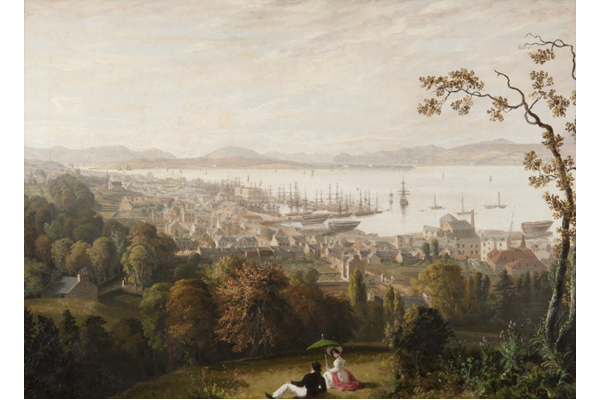
The Town of Greenock
The Town of Greenock by John Fleming (1792-1845) - Oil on canvas - 66.5 x 105.5 cm - 1826 - 1977.817 ©McLean Museum and Art Gallery, Greenock
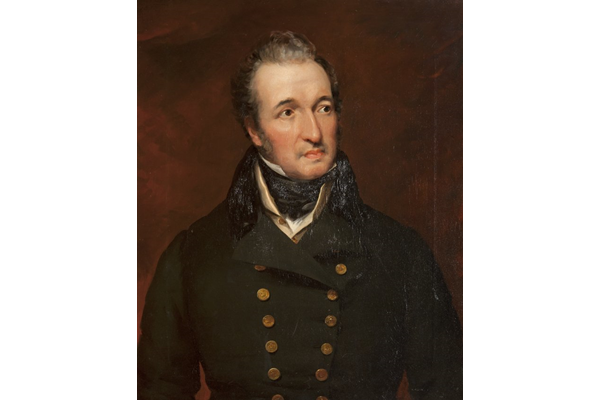
Portrait of John Galt (1779-1839)
Portrait of John Galt (1779-1839) by John Fleming (1792-1845) - Oil on canvas - 76.3 x 63.4 cm - 1838 - 1978.367 ©McLean Museum and Art Gallery, Greenock

Loch Tay and Ben Lawers
Loch Tay and Ben Lawers by John Fleming (1792-1845) - Oil on canvas - 12.5 x 17.5 cm - 1832 - 1977.809 ©McLean Museum and Art Gallery, Greenock.
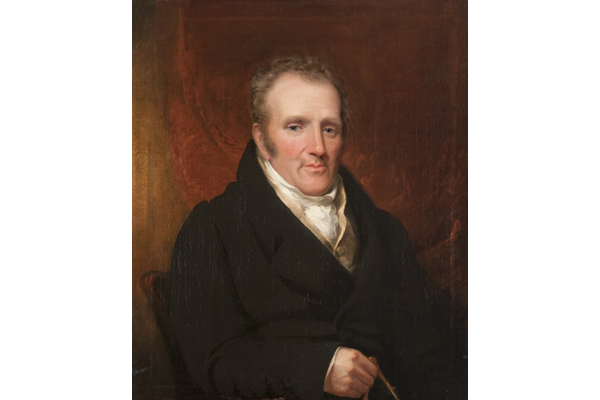
Henry Bell (1767-1830)
Portrait of Henry Bell (1767-1830) by John Fleming (1792-1845) - Oil on canvas - 78 x 65.2 cm - 1826 - 1978.369 © McLean Museum and Art Gallery, Greenock
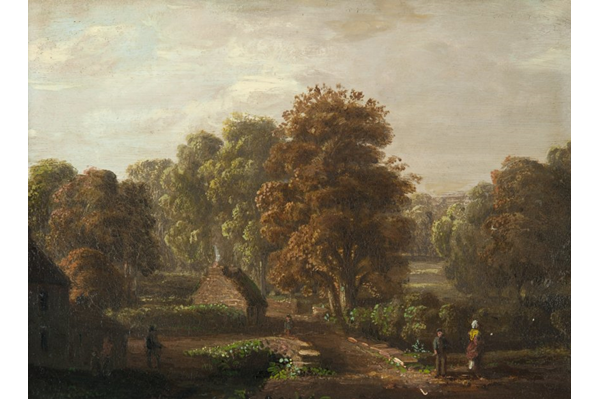
Cartsburn House, Greenock
Cartsburn House, Greenock by John Fleming (1792-1845) - Oil on canvas - 19.5 x 28 cm - 1977.810 - © McLean Museum and Art Gallery, Greenock.
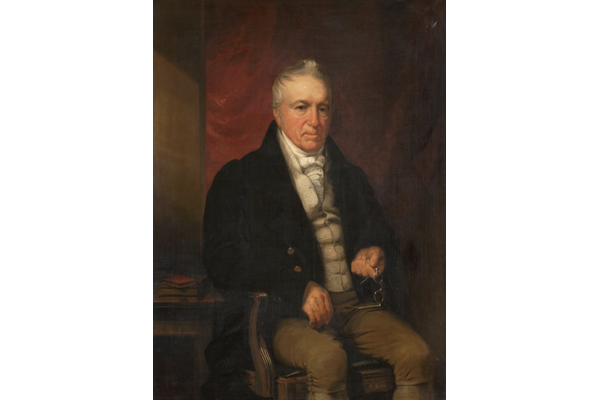
Robert Steele (1791-1879)
Robert Steele (1791-1879) by John Fleming (1792-1845) - Oil on canvas - 120.5 x 91 cm - 1826 - L1977.815 - © McLean Museum and Art Gallery, Greenock.
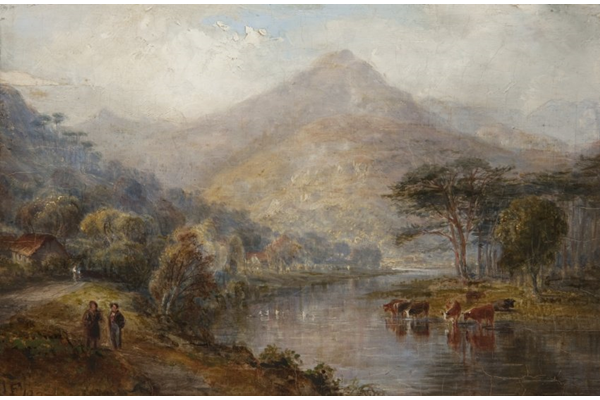
Highland Landscape with Cattle Drinking
Highland Landscape with Cattle Drinking by John Fleming (1792-1845) - Oil on panel - 15.3 x 22.8 cm - 1827 - 1977.811 - © McLean Museum and Art Gallery, Greenock.
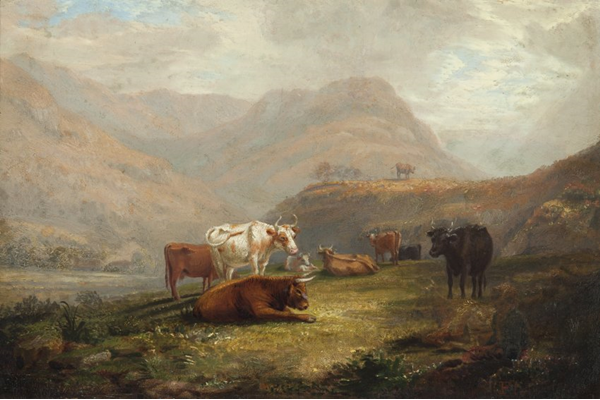
Landscape with Cattle
Landscape with Cattle by John Fleming (1792-1845) - Oil on canvas - 19.5 x 29.5 cm - 1826 - 1977.812 - © McLean Museum and Art Gallery, Greenock.
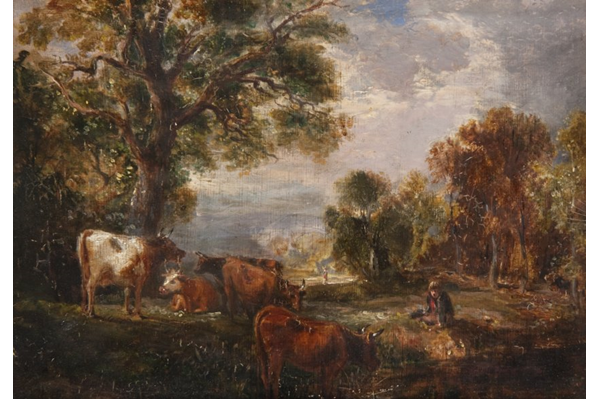
October Pastoral
October Pastoral by John Fleming (1792-1845) - Oil on board - 17.3 x 23.2 cm - 1977.814 - © McLean Museum and Art Gallery, Greenock.

Mrs. Jane Barclay Angus (1796-1849)
Mrs. Jane Barclay Angus (1796-1849) by John Fleming (1792-1845) - Oil on canvas - 75.9 x 63.5 cm - 1830-1840 - 1977.819 - © McLean Museum and Art Gallery, Greenock.

Greenock from the East
Greenock from the East by John Fleming (1792-1845) - Oil on canvas - 135 x 208 cm - 1813-1818 - 1977.820 - © McLean Museum and Art Gallery, Greenock.
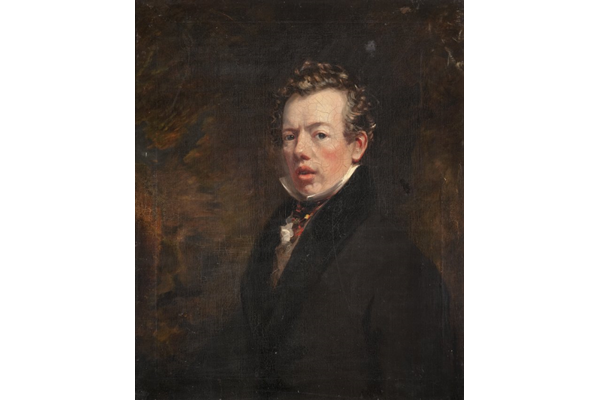
John Fleming (1792-1845)
John Fleming (1792-1845) - self-portrait - Oil on canvas - 76.5 x 64 cm - c 1813 - 1977.821 - © McLean Museum and Art Gallery, Greenock.
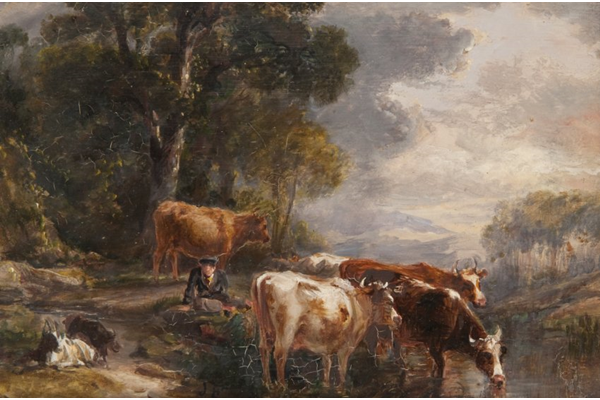
Landscape with Cattle
Landscape with Cattle by John Fleming (1792-1845) - Oil on canvas - 16.1 x 22.2 cm - 1977.822 - © McLean Museum and Art Gallery, Greenock.

Captain Newman of Smith & Jordanhill
Captain Newman of Smith & Jordanhill by John Fleming (1792-1845) - Oil on canvas - 114 x 84.5 cm - 1978.200 - © McLean Museum and Art Gallery, Greenock.
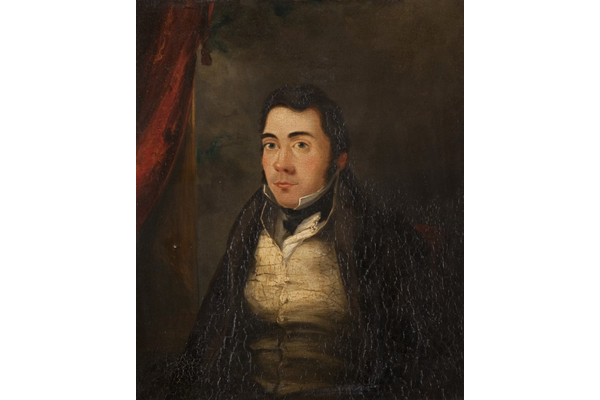
Daniel Weir (1796-1831)
Daniel Weir (1796-1831) by John Fleming (1792-1845) - Oil on canvas - 29.8 x 35 cm - 1977.825 - © McLean Museum and Art Gallery, Greenock.

Seashore at Gourock
Seashore at Gourock by John Fleming (1792-1845) - Watercolour on paper - 6.9 x 11.6 cm - 1977.808 - © McLean Museum and Art Gallery, Greenock.
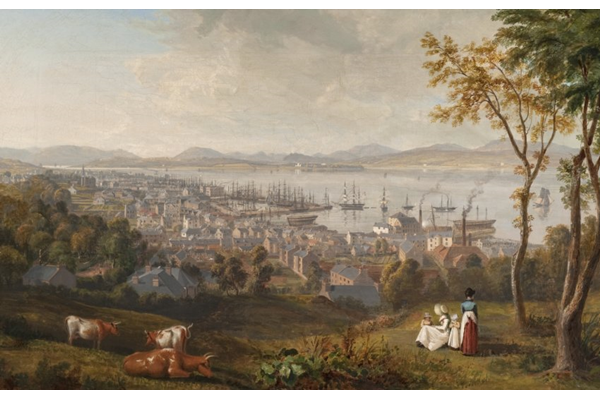
Greenock from the East
Greenock from the East by John Fleming (1792-1845) - Oil on canvas - 63.7 x 89.3 cm - 1827 - 1977.818 - © McLean Museum and Art Gallery, Greenock.
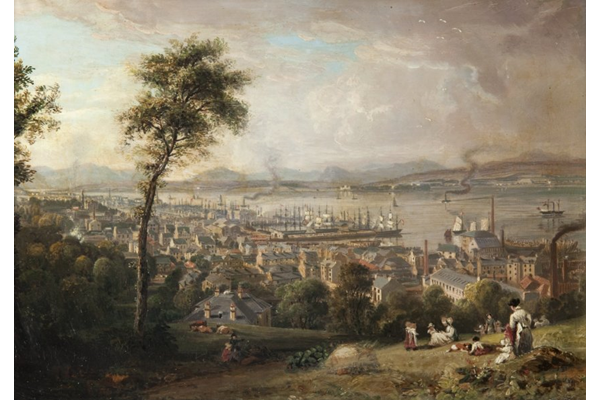
Greenock from the South East
Greenock from the South East by John Fleming (1792-1845) - Oil on panel - 20.8 x 31 cm - c 1828-1830 - 1977.823 - © McLean Museum and Art Gallery, Greenock.




















